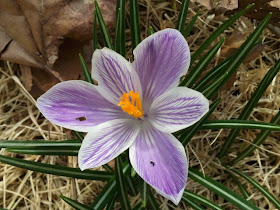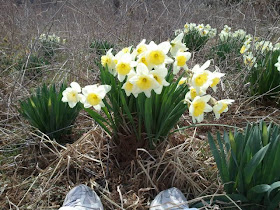Today's post was contributed by an Urban Science Adventures! © reader, Ashley Warner. Ashley is an astute animal observer and has always been interested in the ways that animals get around human habitation. Ashley asked to write a guest post for outlining tips for finding signs of wild animals in city parks. I am very glad to host her first contribution. Please be sure to leave comments.
"Living in the Northwest I get a lot of chances to see animals in and out of the city."
A city park does not need to be just for taking a casual stroll. Instead, it can be a learning opportunity for anyone that wishes to discover more about the animals that may be residing in an area. While finding animals in your local park may sound challenging, the truth is that you don’t need to have an online biology degree or even an encyclopedic knowledge of animals to do so. In fact, you can find wildlife almost anywhere by simply knowing how to look for their nests, dens or other areas that they may inhabit.
Undoubtedly, there are some animals that are going to be found no matter where you go. For example, squirrels are a common animal that can be found in most national parks, city parks, and even some back yards. Yet when paying a visit to your local park you are also likely to come across some less common animals as well, such as owls, ducks, geese and maybe even swans. These animals will especially be present in parks where visitors frequently put out food for wildlife or there is an abundance of open water.
The best way to spot a squirrel is to look very hard. These animals blend in with their surroundings very well. In fact, you might want to look for their nest first, which is about the size of a football and comprised of twigs, grass and bark. Many times these nests will be in between the branches of trees or sometimes in a hole inside the tree. Keep in mind that these nests are going to be more dominant in areas where there are many trees.
 |
| Squirrel Nest. Photo by Rodd Dierker. |
Another resident of city parks that may be difficult to find are owls. Since these birds prefer to be out in the dark, it is unlikely that you will see them unless you visit the park at night. However, during the daytime you can search for their nests. Look for a hole inside a tree, where the tree is in the shade. Owls generally prefer this location since light does not come into the hole. In addition, you can also determine if owls are in the area by looking for small pellets that consist of decayed bones on the ground, which are the remnants of whatever the owl had for dinner.
If there is some form of water in your park or if people frequently feed the wildlife there, there is a good chance ducks and geese will be at hand. One sign people can use to determine if there are indeed waterfowl in the area is the presence of a nest. These nests will usually be along the path of water or sometimes in the middle of a cluster of weeds. Most of the time the animal is hid from view among all the weeds so people may actually be stepping over them and not even realizing that they are there. The same can also be said for swans. However these birds usually prefer to have their nest right on the water and hardly ever venture far from their home.
Overall, a city park can be a great place to find wildlife. Squirrels, owls and waterfowl are just a few of the animals you can expect to find in your local park. Better yet, if the area was once home to wilderness, you may even encounter foxes, raccoons, ground squirrels or even coyotes.
That ws a fantastic post about spotting animals and animal signs in your backyard. Also check out Urban Wildlife Watch: Squirrels and Dreys. Thanks Ashley for sharing your own Urban Science Adventures! ©. I hope more of you feel excited about sharing your own stories of urban science exploration.








